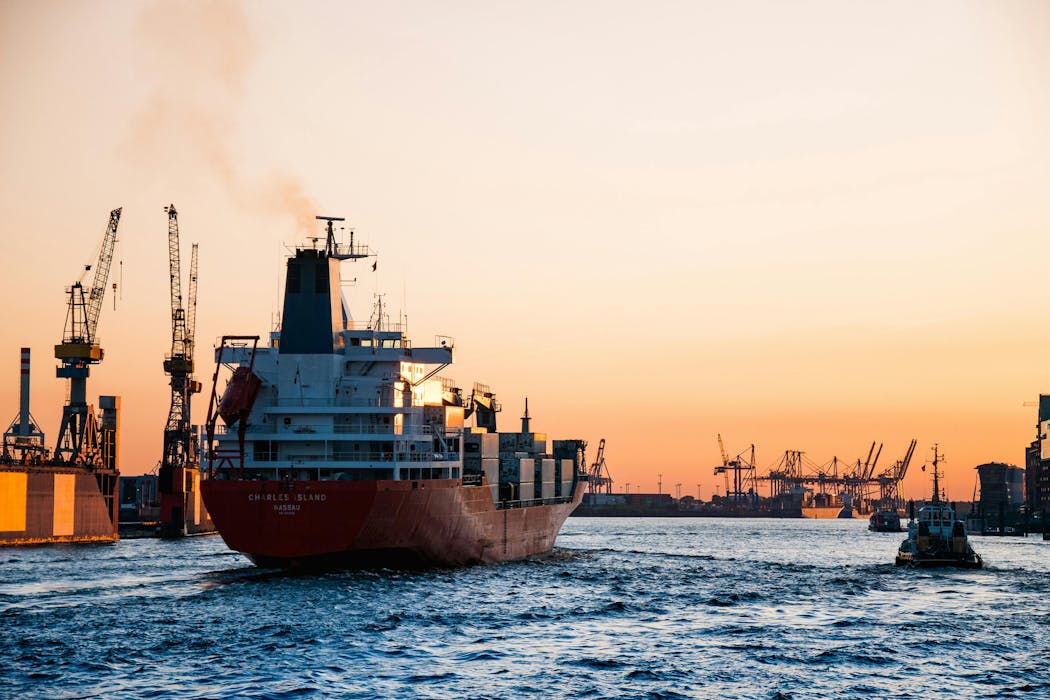
Shipping moves 90% of global trade and produces nearly 3% of global emissions . The sector has proved challenging to clean up , as cargo ships can travel for weeks between ports and typically rely on cheap, energy-dense and extremely polluting heavy fuel oil.
Author
- Anthony Wiskich
Visiting Fellow in Economics, Australian National University; CSIRO
Earlier this year, international efforts to move shipping towards net zero by using cleaner fuels fell apart under pressure from the United States. But as battery prices fall year on year, there might be another way forward.
Electric ferries already shuttle passengers and cars on short routes, while harbour tugs and inland cargo vessels are also going electric . At present, electrification works best over modest distances where charging can happen at the dock.
Could it ever work for container ships crisscrossing oceans? These giants can travel from China to Europe without refuelling due to the energy density of oil. The weight and expense of battery packs means it would be hard to swap oil for batteries.
But electrification isn't all or nothing. Batteries would need to begin by operating alongside liquid fuels. In recent research , I lay out two potential ways to do this: using onboard battery packs and charging at ports, or connecting container ships to dedicated battery vessels.

How can batteries best help move cargo?
Electrification is worthwhile as a way to cut emissions and potentially save money. The question is how to do it - and whether it stacks up economically.
Placing batteries permanently on the ship is intuitive, matching the main way battery packs are used in electric cars, buses and trucks. In this scenario, ships would recharge in ports and also ideally at sea to make the most of the expensive batteries.
The second approach is different. Here, container ships able to propel themselves using fuel or electricity would tap into a global fleet of smaller battery vessels.
A container ship would link to a battery vessel and use its stored power as the vessel moves alongside it. The battery vessel would then peel off and return to port to charge up again. Battery vessels already exist, but at smaller scale . One option would be tightly integrating battery vessels, like the submarine swallowed by the ship in the Bond film The Spy Who Loved Me.
My modelling shows a container ship going from China to Europe could be powered by battery vessels between Chinese ports and Singapore. It would then use fuel to go from Singapore to Sri Lanka and then to the Horn of Africa. A lack of nearby land means battery vessels would have to power the ship for more than four days, which would be economical only if marine-rated battery prices fell extremely low (under A$100 per kilowatt-hour).
Once at the Horn of Africa, the ship could switch back to battery vessels that charge using the region's booming solar capacity to go through the Red and Mediterranean Seas to northern Europe. My modelling suggests it would take 33 battery vessels to go from China to northern Europe.
Is it economically viable?
My modelling suggests it doesn't make economic sense to install large battery packs on ships. For each giant New Panamax container ship, it would cost almost A$150 million to install 600 megawatt-hours of storage at $232,000 per MWh. Batteries rated for ocean conditions are more expensive. Fully charged, this giant battery pack would propel a container ship for 24 hours - about 700km.
The ship would have to be charged regularly to make the investment worthwhile. But long distances between some ports makes this difficult, and if the route had to change to go around Africa rather than through the Red Sea, the expensive battery would likely sit idle for weeks.
The off-ship battery vessel approach has more promise, as it offers a gradual approach and more flexibility.
Battery ships could be deployed first where renewable power is cheapest or where distances between stops are short. The benefits of partial electrification could potentially begin at today's prices, assuming a carbon price was applied to shipping fuel.
While container ships are currently being built and retrofitted to allow electrical connectivity at port, this wouldn't be enough. The giant engines of these ships would have to be modified to permit electric propulsion at the cost of 5-10% efficiency.
Fuel is a large cost for ship owners, as container ships burn more than 100 tonnes a day. A tonne of fuel costs abour A$800 and provides the same useful power as about 6 megawatt-hours of electricity. When fuel is expensive, ships travel more slowly.
Even partial electrification would bring a speed boost. My research suggests running on electric propulsion could boost speeds by up to 50%.
If battery prices keep falling sharply , ship operators would gain a clear financial incentive to seek out electric options. Ships would travel slowly on fuel and faster on electricity.
Looking ahead
The shipping industry is looking to cut emissions and head towards net zero. This will require several technologies, ranging from clean fuels to more efficient engines and electrification where feasible.
To date, most research on shipping electrification has focused on short trips. But steep and ongoing price declines for batteries and renewables change this equation.
If carbon emissions are priced in more countries, the equation will change faster, as electricity would become far and away the cheaper option.
Giant battery packs on ocean-crossing container ships are unlikely ever to make financial sense. By contrast, the off-ship battery vessel is much more promising. Even if it ultimately proves infeasible, the idea deserves serious exploration.
![]()
Anthony Wiskich does not work for, consult, own shares in or receive funding from any company or organisation that would benefit from this article, and has disclosed no relevant affiliations beyond their academic appointment.






